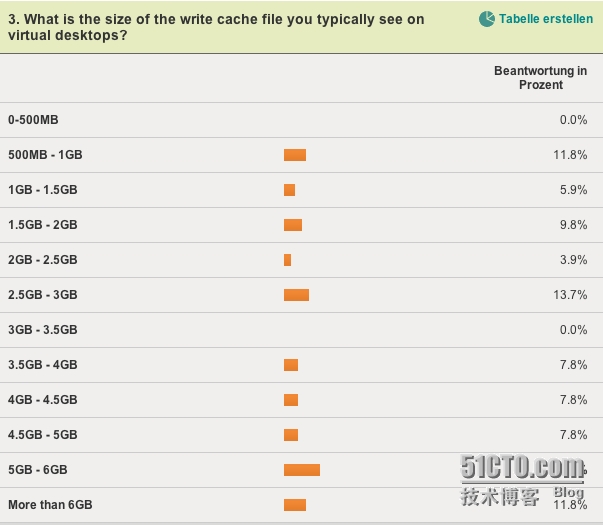- SpringBoot项目使用Redis作为数据缓存
sclibingqing
缓存springbootredis
一、基础配置步骤1.添加依赖在pom.xml中引入Redis和Cache依赖:org.springframework.bootspring-boot-starter-data-redisorg.springframework.bootspring-boot-starter-cache2.配置Redis连接,YAML格式配置文件中配置如下:spring:redis:host:127.0.0.1#Re
- 每天一个前端小知识 Day 16 - 前端性能优化全流程指南
蓝婷儿
前端面试前端性能优化
前端性能优化全流程指南(从加载到交互)目标概览:前端性能优化四大核心维度阶段优化目标加载阶段首屏速度、资源压缩、请求优化渲染阶段减少回流重绘、避免布局抖动交互阶段保持高帧率、避免卡顿持久运行阶段内存泄露处理、缓存命中策略一、加载性能优化(首屏速度为王)✅核心策略:资源体积优化JS/CSS/图片压缩(如gzip,brotli)Tree-shaking(去除无用代码)图片压缩(webp优先)合理拆包(
- PCIe学习笔记(26)
IC纯小白
学习笔记网络
ErrorForwarding(错误转发)错误转发(也称为数据中毒),通过设置EP位表示。下面是一些使用错误转发的例子:•例#1:从主存读取遇到不可纠正的错误•例#2:PCI写到主存的奇偶校验错误•例#3:内部数据缓冲区或缓存上的数据完整性错误错误转发使用模型•错误转发仅用于读取完成数据,AtomicOp完成数据,AtomicOp请求数据或写数据,从不用于错误在“头”(请求阶段,地址/命令等)的情
- Tomcat性能调优指南
文章目录一、Tomcat性能调优概述为什么需要调优Tomcat?二、Tomcat架构与性能关键点三、JVM调优1.内存配置优化2.垃圾回收优化3.其他JVM优化参数四、连接器(Connector)调优1.NIOvsAPR/Native2.高级NIO配置五、线程池优化六、会话管理优化1.会话超时配置2.会话持久化选择七、静态资源处理优化1.启用Sendfile2.配置静态资源缓存八、其他优化措施1.
- 100W QPS 短链系统怎么设计
Java程序员 拥抱ai
电商架构大数据
看上去业务简单,其实,覆盖的知识点非常多:高并发、高性能分布式IDRedisBloomFilter高并发、低内存损耗的过滤组件知识分库、分表海量数据存储多级缓存的知识HTTP传输知识二进制、十六进制、六十二进制知识总体来说,高并发、高性能系统的核心领域,都覆盖了。所以,分析下来,得到一个结论:是一个超级好的问题。1、短URL系统的背景短网址替代长URL,在互联网网上传播和引用。例如QQ微博的url
- 前端基础知识JavaScript系列 - 25(Javascript本地存储)
前端小白从0开始
前端javascript开发语言
一、方式javaScript本地缓存的方法我们主要讲述以下四种:cookiesessionStoragelocalStorageindexedDBcookieCookie,类型为「小型文本文件」,指某些网站为了辨别用户身份而储存在用户本地终端上的数据。是为了解决HTTP无状态导致的问题作为一段一般不超过4KB的小型文本数据,它由一个名称(Name)、一个值(Value)和其它几个用于控制cooki
- AWTK:一键切换皮肤,打造个性化UI
ZLG 致远电子
个人开发
想让你的应用在不同场景下都能完美呈现吗?皮肤切换功能必不可少!本文将介绍AWTK,一款强大的GUI框架,它通过内置资源管理和优化缓存,轻松实现皮肤切换功能。 前言当今的UI应用中,为了满足不同使用场景和用户的个性化需求,许多软件都加入了切换皮肤的功能。例如,当夜晚使用手机时,屏幕亮度可能会让人感到刺眼,此时用户可以将APP切换为夜间模式;而在户外强光环境下,则需要切换到高亮度
- 计算机系统中隐藏的‘时间陷阱’——为什么你的代码总比预期慢10倍?
尤物程序猿
java开发语言
引言大家经常遇到一个诡异现象:明明算法时间复杂度算得好好的,为什么实际运行速度总比预期慢得多?你以为是数据库查询的锅,优化了SQL却收效甚微;你怀疑是网络延迟,但抓包数据又显示一切正常。这背后可能隐藏着计算机系统中鲜为人知的“时间陷阱”——那些未被计入传统性能分析,却真实吞噬效率的底层机制。本文将揭示5个最典型的陷阱,从CPU缓存失效到操作系统调度暗坑,并用真实案例展示如何绕过它们。陷阱1:CPU
- 互联网大厂Java面试指南:从基础到高阶技术栈与业务场景实战
yiiyx
Java场景面试宝典JavaSpringBoot微服务面试分布式系统
互联网大厂Java面试指南:从基础到高阶技术栈与业务场景实战场景介绍本文模拟互联网大厂高级Java工程师面试场景,涵盖JavaSE、Spring生态、微服务、数据库、缓存、消息队列等技术栈,结合音视频、电商、金融等业务场景,提供3轮渐进式提问与详细解析。技术栈核心语言与平台:JavaSE(8/11/17),JakartaEE(JavaEE),JVM构建工具:Maven,Gradle,AntWeb框
- 深入理解Redis
深入理解Redis:高性能内存数据库的核心原理与应用实践1.引言在现代互联网应用中,高性能、低延迟的数据访问是至关重要的。传统的关系型数据库(如MySQL)虽然功能强大,但在高并发场景下往往成为性能瓶颈。Redis(RemoteDictionaryServer)应运而生,作为一个开源的内存键值数据库,它凭借极快的读写速度、丰富的数据结构和灵活的扩展能力,成为缓存、会话存储、消息队列等场景的首选解决
- 苍穹外卖Day07
guslegend
windows
缓存菜品问题用户端小程序展示的菜品数据都是通过查询数据库获得,如果用户端访问量比较大,数据库访问压力随之增大。结果:系统响应慢、用户体验差解决方案通过Redis来缓存菜品数据,减少数据库查询操作缓存逻辑分析:每个分类下的菜品保存一份缓存数据数据库中菜品数据有变更时清理缓存数据DishController代码改写(用户端)publicResult>list(LongcategoryId){//构造r
- SpringBoot+WebSocket实现直播连麦
雨轩智能
java及Linux相关教程springbootwebsocket后端
一、引言随着互联网技术的发展,直播已成为一种主流的内容传播形式。其中,连麦功能作为直播互动的重要手段,能够有效提升用户参与感和观看体验。本文将介绍如何使用SpringBoot和WebSocket技术构建一个直播连麦系统,实现主播与观众之间的实时音视频交流和文字聊天功能。为了方便DEMO的运行,本系统基于纯内存操作实现核心业务逻辑,不依赖外部数据库或者缓存组件。二、技术设计2.1技术栈后端:Spri
- 【Rust + Actix Web】现代后端开发:从零构建高并发 Web 应用
LCG元
前端rust前端开发语言
目录项目概述环境准备项目创建与依赖配置系统架构设计核心代码实现1.数据库模型(`src/models.rs`)2.应用状态管理(`src/state.rs`)3.核心业务逻辑(`src/handlers.rs`)4.主应用入口(`src/main.rs`)高并发优化策略1.异步处理模型2.连接池配置优化3.缓存策略设计性能测试结果部署方案Docker部署配置(`Dockerfile`)Kubern
- 中间件复习(java向,示例代码为java),所有问题都会有链接单独解析
搞不懂语言的程序员
重拾java中间件中间件java开发语言
根据近些年情况整理的Java服务常用中间件及面试复习指南(每个中间件10个以上问题+实战模拟)一、核心中间件清单(2020-2023高频使用)中间件分类典型中间件核心应用场景RPC框架Dubbo3.x、gRPC、SpringCloudOpenFeign微服务通信、跨语言调用消息队列Kafka、RocketMQ、RabbitMQ异步解耦、削峰填谷、顺序消息缓存Redis(集群/Redisson)、C
- 小柿子影视安卓版,跨平台开发的技术挑战与解决方案
2501_92530989
音视频百度经验分享其他
在移动应用开发的浪潮中,视频类App因其对性能、用户体验、跨平台兼容性要求高,成为开发者面临的重点技术难题之一。本文将结合实际案例,分析一个典型的视频类项目“小柿子”的跨平台开发过程中的关键技术点。一、背景介绍“小柿子影视”是一款轻量级视频播放App,专注于提供清爽的界面和流畅的播放体验。该项目同时支持小柿子安卓与小柿子iOS两个平台,目标用户覆盖广泛。因此,跨平台开发策略、播放器内核选择、缓存机
- 基于 Kintex UltraScale 系列 2 路 QSFP+40G 光纤 PCIe 数据传输卡 / 光纤适配器(5GByte/s 带宽KU060光纤 PCIe 数据传输卡)
F_white
数据中心视频与图像采集处理机器视觉
PCIE732是一款基于PCIE总线架构的高性能数据传输卡,板卡具有1个PCIex8主机接口、2个QSFP+40G光纤接口,可以实现2路QSFP+40G光纤的数据实时采集、传输。板卡采用Xilinx的高性能KintexUltraScale系列FPGA作为实时处理器,板载2组独立的72位DDR4SDRAM大容量缓存。板卡具有1个RJ45千兆以太网口以及若干IO信号。一般应用于基于服务器的雷
- 探索高效缓存:CoroutinesCache 开源库深度解析
龙香令Beatrice
探索高效缓存:CoroutinesCache开源库深度解析CoroutinesCacheInmobiledevelopmentexistssolutionforcachingwithRxJavausage,butthereisnosolutionsforKotlinCoroutines.Theprojectistoprovidethisfunctionalitytomobilecommunity.
- @Cacheable 和 @CacheEvict 注解的详细使用说明及参数解析,结合 Spring Cache 的核心功能和实际开发场景
大手你不懂
JavaJava项目实战Redisspringjavaredis
一、@Cacheable注解详解1.核心作用@Cacheable用于标记方法的返回值需要被缓存。执行逻辑:方法调用前检查缓存:若缓存存在且有效,直接返回缓存值;否则执行方法并将结果存入缓存。2.关键参数参数名作用示例value/cacheNames必填,指定缓存名称(命名空间),可配置多个缓存。@Cacheable(value="users",key="#id")key指定缓存键(支持SpEL表达
- Spring Cache+Redis缓存方案详解:从代码到实践
大手你不懂
JavaJava项目实战Redisspring缓存redis
描述:在现代Java开发中,缓存是提升系统性能的核心手段之一。本文通过实际代码案例,深入解析SpringCache与Redis的集成原理,结合项目中的ModuleDatabaseInfoService接口和RedisConfig配置,探讨如何通过声明式缓存实现高效的数据库访问优化。一、核心代码解析1.服务接口设计(拿查询数据源配置信息举例)publicinterfaceModuleDatabase
- Trae CN
WangLinXX
AIai
️技术实现深度架构设计采用微内核+插件化架构,核心引擎仅占15MB内存,通过RPC调用云侧AI模型(响应延迟约800ms)。本地缓存最近3次生成代码的AST结构,支持离线基础编辑。模型协同机制豆包1.5Pro负责需求语义解析,DeepSeek-R1生成代码骨架,DeepSeek-V3进行风格优化。三模型并行推理,最终由规则引擎校验API兼容性(如微信SDK版本匹配)。性能实测数据场景响应时间代码通
- BaiduSitemap - Typecho站点地图生成与多搜索引擎推送插件
独立开发者阿乐
原创javascript云计算自动化大数据数据分析
文章目录BaiduSitemap-Typecho站点地图生成与多搜索引擎推送插件✨功能特点插件架构核心模块文件结构安装方法方法一:手动安装方法二:Git克隆⚙️配置说明站点地图基本设置搜索引擎配置百度搜索引擎必应(Bing)搜索引擎谷歌(Google)搜索引擎使用指南站点地图访问手动操作站点地图包含内容高级功能图片索引优化推送状态监控技术实现详解站点地图生成流程搜索引擎推送机制缓存机制❓常见问题站
- 【Vue】 keep-alive缓存组件实战指南
Vesper63
vue.js缓存前端
Vue中keep-alive的使用详解keep-alive是Vue内置的一个抽象组件,用于缓存不活跃的组件实例,避免重复渲染,从而优化性能。基本用法核心功能组件缓存:当组件切换时,不会被销毁状态保留:组件的所有状态(数据、DOM状态等)会被保留生命周期:触发特有的activated和deactivated钩子使用场景标签页切换路由视图缓存需要保存表单数据的场景组件频繁切换但需要保持状态属性配置1.
- 随机存储器有哪些,只读存储器又有哪些
我推是大富翁
计算机组成原理计算机组成原理
一、随机存储器(RAM,易失性,断电数据丢失)1.静态RAM(SRAM)特点:用触发器存储数据,无需刷新,速度极快(纳秒级),但容量小、成本高。用途:CPU缓存(如L1/L2/L3Cache)。2.动态RAM(DRAM)特点:用电容存储,需定期刷新,速度较慢(微秒级),容量大、成本低。变种:SDRAM:同步DRAM(如DDR3/DDR4/DDR5,电脑内存条)。VRAM:显卡专用显存,支持高速图像
- 【项目实战】Redis使用场景之基于Redis实现分布式限流
本本本添哥
002-进阶开发能力003-数据库redis分布式数据库
一、技术概览1.1定义分布式限流是指在分布式系统中限制请求的速率,以保护后端服务不被过多的请求压垮。它可以帮助我们控制系统的负载,保证服务的稳定性。Redis是一个高性能的键值存储系统,常用于缓存、消息队列和实时分析等场景。由于其支持丰富的数据结构和原子操作,非常适合用来实现分布式限流。专业术语:令牌桶算法(TokenBucket):一种流量整形算法,允许突发流量但不超过平均速度。漏桶算法(Lea
- 【IO优化】磁盘IO优化
flyair_China
云计算
一、磁盘I/O优化的方案1.1、硬件与存储架构优化存储介质升级SSD/NVMe替代HDD:随机读写性能提升100倍,延迟降至微秒级(HDD寻道时间约5-10ms,SSD/sys/block/nvme0n1/queue/scheduler#NVMe调度器设置1.3、内核级缓存与预取策略脏页刷新控制参数调整:#降低后台刷脏阈值(避免突发I/O)echo5>/proc/sys/vm/dirty_back
- Redis在企业实战开发中的核心作用:从缓存到分布式系统的关键支柱
LambdaCat
缓存redisjava
在高并发、分布式系统成为主流的今天,Redis已成为企业技术栈中不可或缺的组件。据2024年最新统计,超过82%的互联网企业在生产环境中使用Redis,处理着每秒数十万甚至上百万级的请求在现代软件开发领域,高性能、高并发和可扩展性已成为系统设计的核心要求。面对海量用户和实时数据处理需求,传统数据库在性能方面逐渐显现瓶颈。正是在这样的背景下,Redis(RemoteDictionaryServer)
- 七、SPringCloud中间件
@平常心~~~
springcloud中间件spring
1.Nacos(配置数据库)注册中心配置中心注册中心:服务治理:引入注册中心(将服务注册到注册中心)1.注册中心:存的是服务提供者的服务,和可以被推送的服务2.服务消费者:从注册中心订阅服务,既可以拉取服务,也可以推送变更3.服务提供者:向注册中心提供服务的端口号,IP等,心跳续约:隔一段时间会向注册中心推送新的服务注册中心挂断,不会立即断开连接,除非服务提供者改变IP,有缓存用户如何挑选实例(服
- 什么是DNS缓存投毒?有哪些防御措施?
在互联网的浩瀚海洋中,DNS(域名系统)如同一座灯塔,为用户指引着通往各个网站的路径。它将人们易于记忆的域名转换为计算机能够识别的IP地址,使得网络世界得以顺畅运转。然而,这座灯塔却面临着被恶意篡改的风险,DNS缓存投毒便是其中一种极具危害性的攻击手段。什么是DNS缓存投毒?DNS缓存投毒,也被称为DNS欺骗或DNS缓存污染,是一种通过向DNS缓存中输入错误信息,使DNS查询返回错误响应,从而将用
- Python装饰器深度解析:提升代码可读性与复用性
天天进步2015
pythonpython开发语言
Python装饰器(Decorator)是提升代码可读性与复用性的强大工具。无论是日志记录、权限校验、性能分析还是缓存机制,装饰器都能让你的代码更加优雅、简洁和高效。本文将深入解析Python装饰器的原理、常见用法、进阶技巧与最佳实践,助你写出更具专业水准的Python代码。目录装饰器的基本原理函数装饰器的常见用法带参数的装饰器类装饰器与方法装饰器装饰器的嵌套与组合进阶技巧:保留元信息与类型提示装
- 缓存和数据库一致性问题
ezreal_pan
后端Go缓存数据库
更新数据库后直接更新缓存方案直接更新缓存的核心优势减少缓存穿透风险:直接设置缓存可以避免缓存删除后短期内的缓存穿透问题(即大量请求穿透到数据库)。尤其在高频更新场景下,连续写入时可减少缓存未命中的概率。数据一致性优先:直接获取最新的数据库记录后立即更新缓存,确保缓存数据与数据库强一致,避免传统"删除缓存+后续查询重建"模式可能产生的短暂数据不一致窗口。理论上直接更新缓存是可以带来上述的这些有点。尤
- Enum用法
不懂事的小屁孩
enum
以前的时候知道enum,但是真心不怎么用,在实际开发中,经常会用到以下代码:
protected final static String XJ = "XJ";
protected final static String YHK = "YHK";
protected final static String PQ = "PQ";
- 【Spark九十七】RDD API之aggregateByKey
bit1129
spark
1. aggregateByKey的运行机制
/**
* Aggregate the values of each key, using given combine functions and a neutral "zero value".
* This function can return a different result type
- hive创建表是报错: Specified key was too long; max key length is 767 bytes
daizj
hive
今天在hive客户端创建表时报错,具体操作如下
hive> create table test2(id string);
FAILED: Execution Error, return code 1 from org.apache.hadoop.hive.ql.exec.DDLTask. MetaException(message:javax.jdo.JDODataSto
- Map 与 JavaBean之间的转换
周凡杨
java自省转换反射
最近项目里需要一个工具类,它的功能是传入一个Map后可以返回一个JavaBean对象。很喜欢写这样的Java服务,首先我想到的是要通过Java 的反射去实现匿名类的方法调用,这样才可以把Map里的值set 到JavaBean里。其实这里用Java的自省会更方便,下面两个方法就是一个通过反射,一个通过自省来实现本功能。
1:JavaBean类
1 &nb
- java连接ftp下载
g21121
java
有的时候需要用到java连接ftp服务器下载,上传一些操作,下面写了一个小例子。
/** ftp服务器地址 */
private String ftpHost;
/** ftp服务器用户名 */
private String ftpName;
/** ftp服务器密码 */
private String ftpPass;
/** ftp根目录 */
private String f
- web报表工具FineReport使用中遇到的常见报错及解决办法(二)
老A不折腾
finereportweb报表java报表总结
抛砖引玉,希望大家能把自己整理的问题及解决方法晾出来,Mark一下,利人利己。
出现问题先搜一下文档上有没有,再看看度娘有没有,再看看论坛有没有。有报错要看日志。下面简单罗列下常见的问题,大多文档上都有提到的。
1、没有返回数据集:
在存储过程中的操作语句之前加上set nocount on 或者在数据集exec调用存储过程的前面加上这句。当S
- linux 系统cpu 内存等信息查看
墙头上一根草
cpu内存liunx
1 查看CPU
1.1 查看CPU个数
# cat /proc/cpuinfo | grep "physical id" | uniq | wc -l
2
**uniq命令:删除重复行;wc –l命令:统计行数**
1.2 查看CPU核数
# cat /proc/cpuinfo | grep "cpu cores" | u
- Spring中的AOP
aijuans
springAOP
Spring中的AOP
Written by Tony Jiang @ 2012-1-18 (转)何为AOP
AOP,面向切面编程。
在不改动代码的前提下,灵活的在现有代码的执行顺序前后,添加进新规机能。
来一个简单的Sample:
目标类:
[java]
view plain
copy
print
?
package&nb
- placeholder(HTML 5) IE 兼容插件
alxw4616
JavaScriptjquery jQuery插件
placeholder 这个属性被越来越频繁的使用.
但为做HTML 5 特性IE没能实现这东西.
以下的jQuery插件就是用来在IE上实现该属性的.
/**
* [placeholder(HTML 5) IE 实现.IE9以下通过测试.]
* v 1.0 by oTwo 2014年7月31日 11:45:29
*/
$.fn.placeholder = function
- Object类,值域,泛型等总结(适合有基础的人看)
百合不是茶
泛型的继承和通配符变量的值域Object类转换
java的作用域在编程的时候经常会遇到,而我经常会搞不清楚这个
问题,所以在家的这几天回忆一下过去不知道的每个小知识点
变量的值域;
package 基础;
/**
* 作用域的范围
*
* @author Administrator
*
*/
public class zuoyongyu {
public static vo
- JDK1.5 Condition接口
bijian1013
javathreadConditionjava多线程
Condition 将 Object 监视器方法(wait、notify和 notifyAll)分解成截然不同的对象,以便通过将这些对象与任意 Lock 实现组合使用,为每个对象提供多个等待 set (wait-set)。其中,Lock 替代了 synchronized 方法和语句的使用,Condition 替代了 Object 监视器方法的使用。
条件(也称为条件队列或条件变量)为线程提供了一
- 开源中国OSC源创会记录
bijian1013
hadoopsparkMemSQL
一.Strata+Hadoop World(SHW)大会
是全世界最大的大数据大会之一。SHW大会为各种技术提供了深度交流的机会,还会看到最领先的大数据技术、最广泛的应用场景、最有趣的用例教学以及最全面的大数据行业和趋势探讨。
二.Hadoop
&nbs
- 【Java范型七】范型消除
bit1129
java
范型是Java1.5引入的语言特性,它是编译时的一个语法现象,也就是说,对于一个类,不管是范型类还是非范型类,编译得到的字节码是一样的,差别仅在于通过范型这种语法来进行编译时的类型检查,在运行时是没有范型或者类型参数这个说法的。
范型跟反射刚好相反,反射是一种运行时行为,所以编译时不能访问的变量或者方法(比如private),在运行时通过反射是可以访问的,也就是说,可见性也是一种编译时的行为,在
- 【Spark九十四】spark-sql工具的使用
bit1129
spark
spark-sql是Spark bin目录下的一个可执行脚本,它的目的是通过这个脚本执行Hive的命令,即原来通过
hive>输入的指令可以通过spark-sql>输入的指令来完成。
spark-sql可以使用内置的Hive metadata-store,也可以使用已经独立安装的Hive的metadata store
关于Hive build into Spark
- js做的各种倒计时
ronin47
js 倒计时
第一种:精确到秒的javascript倒计时代码
HTML代码:
<form name="form1">
<div align="center" align="middle"
- java-37.有n 个长为m+1 的字符串,如果某个字符串的最后m 个字符与某个字符串的前m 个字符匹配,则两个字符串可以联接
bylijinnan
java
public class MaxCatenate {
/*
* Q.37 有n 个长为m+1 的字符串,如果某个字符串的最后m 个字符与某个字符串的前m 个字符匹配,则两个字符串可以联接,
* 问这n 个字符串最多可以连成一个多长的字符串,如果出现循环,则返回错误。
*/
public static void main(String[] args){
- mongoDB安装
开窍的石头
mongodb安装 基本操作
mongoDB的安装
1:mongoDB下载 https://www.mongodb.org/downloads
2:下载mongoDB下载后解压
- [开源项目]引擎的关键意义
comsci
开源项目
一个系统,最核心的东西就是引擎。。。。。
而要设计和制造出引擎,最关键的是要坚持。。。。。。
现在最先进的引擎技术,也是从莱特兄弟那里出现的,但是中间一直没有断过研发的
- 软件度量的一些方法
cuiyadll
方法
软件度量的一些方法http://cuiyingfeng.blog.51cto.com/43841/6775/在前面我们已介绍了组成软件度量的几个方面。在这里我们将先给出关于这几个方面的一个纲要介绍。在后面我们还会作进一步具体的阐述。当我们不从高层次的概念级来看软件度量及其目标的时候,我们很容易把这些活动看成是不同而且毫不相干的。我们现在希望表明他们是怎样恰如其分地嵌入我们的框架的。也就是我们度量的
- XSD中的targetNameSpace解释
darrenzhu
xmlnamespacexsdtargetnamespace
参考链接:
http://blog.csdn.net/colin1014/article/details/357694
xsd文件中定义了一个targetNameSpace后,其内部定义的元素,属性,类型等都属于该targetNameSpace,其自身或外部xsd文件使用这些元素,属性等都必须从定义的targetNameSpace中找:
例如:以下xsd文件,就出现了该错误,即便是在一
- 什么是RAID0、RAID1、RAID0+1、RAID5,等磁盘阵列模式?
dcj3sjt126com
raid
RAID 1又称为Mirror或Mirroring,它的宗旨是最大限度的保证用户数据的可用性和可修复性。 RAID 1的操作方式是把用户写入硬盘的数据百分之百地自动复制到另外一个硬盘上。由于对存储的数据进行百分之百的备份,在所有RAID级别中,RAID 1提供最高的数据安全保障。同样,由于数据的百分之百备份,备份数据占了总存储空间的一半,因而,Mirror的磁盘空间利用率低,存储成本高。
Mir
- yii2 restful web服务快速入门
dcj3sjt126com
PHPyii2
快速入门
Yii 提供了一整套用来简化实现 RESTful 风格的 Web Service 服务的 API。 特别是,Yii 支持以下关于 RESTful 风格的 API:
支持 Active Record 类的通用API的快速原型
涉及的响应格式(在默认情况下支持 JSON 和 XML)
支持可选输出字段的定制对象序列化
适当的格式的数据采集和验证错误
- MongoDB查询(3)——内嵌文档查询(七)
eksliang
MongoDB查询内嵌文档MongoDB查询内嵌数组
MongoDB查询内嵌文档
转载请出自出处:http://eksliang.iteye.com/blog/2177301 一、概述
有两种方法可以查询内嵌文档:查询整个文档;针对键值对进行查询。这两种方式是不同的,下面我通过例子进行分别说明。
二、查询整个文档
例如:有如下文档
db.emp.insert({
&qu
- android4.4从系统图库无法加载图片的问题
gundumw100
android
典型的使用场景就是要设置一个头像,头像需要从系统图库或者拍照获得,在android4.4之前,我用的代码没问题,但是今天使用android4.4的时候突然发现不灵了。baidu了一圈,终于解决了。
下面是解决方案:
private String[] items = new String[] { "图库","拍照" };
/* 头像名称 */
- 网页特效大全 jQuery等
ini
JavaScriptjquerycsshtml5ini
HTML5和CSS3知识和特效
asp.net ajax jquery实例
分享一个下雪的特效
jQuery倾斜的动画导航菜单
选美大赛示例 你会选谁
jQuery实现HTML5时钟
功能强大的滚动播放插件JQ-Slide
万圣节快乐!!!
向上弹出菜单jQuery插件
htm5视差动画
jquery将列表倒转顺序
推荐一个jQuery分页插件
jquery animate
- swift objc_setAssociatedObject block(version1.2 xcode6.4)
啸笑天
version
import UIKit
class LSObjectWrapper: NSObject {
let value: ((barButton: UIButton?) -> Void)?
init(value: (barButton: UIButton?) -> Void) {
self.value = value
- Aegis 默认的 Xfire 绑定方式,将 XML 映射为 POJO
MagicMa_007
javaPOJOxmlAegisxfire
Aegis 是一个默认的 Xfire 绑定方式,它将 XML 映射为 POJO, 支持代码先行的开发.你开发服 务类与 POJO,它为你生成 XML schema/wsdl
XML 和 注解映射概览
默认情况下,你的 POJO 类被是基于他们的名字与命名空间被序列化。如果
- js get max value in (json) Array
qiaolevip
每天进步一点点学习永无止境max纵观千象
// Max value in Array
var arr = [1,2,3,5,3,2];Math.max.apply(null, arr); // 5
// Max value in Jaon Array
var arr = [{"x":"8/11/2009","y":0.026572007},{"x"
- XMLhttpRequest 请求 XML,JSON ,POJO 数据
Luob.
POJOjsonAjaxxmlXMLhttpREquest
在使用XMlhttpRequest对象发送请求和响应之前,必须首先使用javaScript对象创建一个XMLHttpRquest对象。
var xmlhttp;
function getXMLHttpRequest(){
if(window.ActiveXObject){
xmlhttp:new ActiveXObject("Microsoft.XMLHTTP
- jquery
wuai
jquery
以下防止文档在完全加载之前运行Jquery代码,否则会出现试图隐藏一个不存在的元素、获得未完全加载的图像的大小 等等
$(document).ready(function(){
jquery代码;
});
<script type="text/javascript" src="c:/scripts/jquery-1.4.2.min.js&quo







